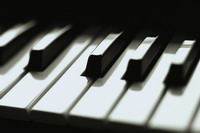Piano Sheets > Irving Gordon Sheet Music > Unforgettable (ver. 3) Piano Sheet
Unforgettable (ver. 3) by Irving Gordon - Piano Sheets and Free Sheet Music

About the Song
Other avaliable versions of this music sheet: Version 1 Version 2 Version 3
"Unforgettable" is a popular song written by Irving Gordon. The song was published in 1951.
The most popular version of the song was recorded by Nat King Cole in 1951, with an arrangement written by Nelson Riddle. A non-orchestrated version of the song recorded in 1952 is featured as a bonus track on the CD reissue of 1955's completely instrumental (save the bonus material) Penthouse Serenade. Cole again recorded the tune ten years later, in a stereo version recorded for the album The Nat King Cole Story. His version of the song was included extensively in the 2009 film Watchmen.
In 1991, Cole's 1962 recording of the song was edited and remixed to create a duet with his daughter, Natalie, which won three awards at the Grammy Awards of 1992: Song of the Year, Record of the Year and Best Traditional Pop Vocal Performance .
Nat Cole's original recording was inducted into the Grammy Hall of.
Download this sheet!
About the Artist

Random article
Getting access to free sheet music for Christmas Christmas is one time when everyone wants to learn how to play the piano. There are so many Christmas carols, hymns and other compositions played. In such a situation, you will find it useful to get free sheet music especially with the Christmas compositions in them.
New age and classical
One of the best advantages about free sheet music is that you can get both classic as well as New Age Christmas musical notes. That means you will be able to play the old time classical compositions, carols etc. and the new artists compositions. The New Age Christmas musical notes are very poignant and lovely and playing these piano notes is sure to stir hearts. One of the drawbacks about New Age Christmas music sheets is that they are very difficult to access. Most New Age albums do not sell too well and hence the demand for these is lesser. In this context, getting access (More...)
